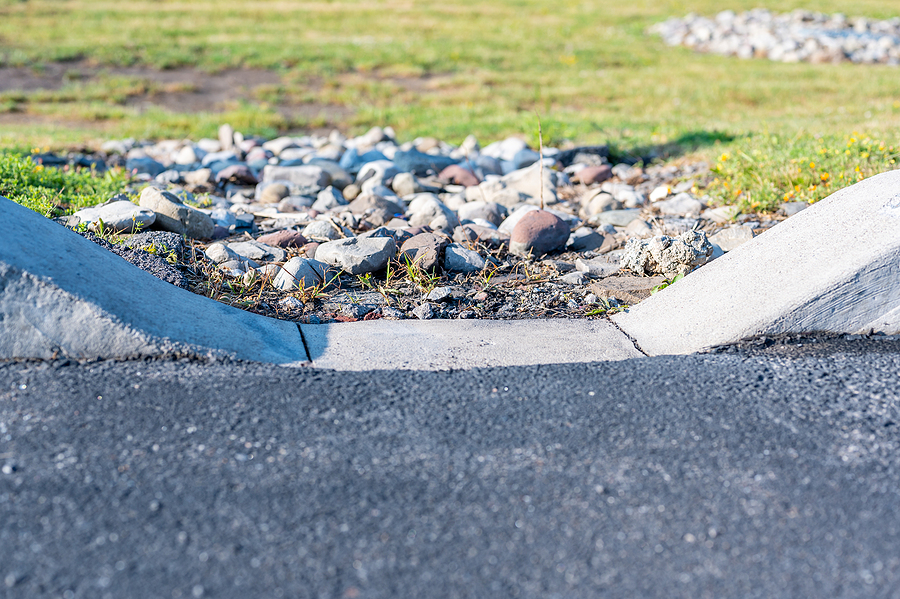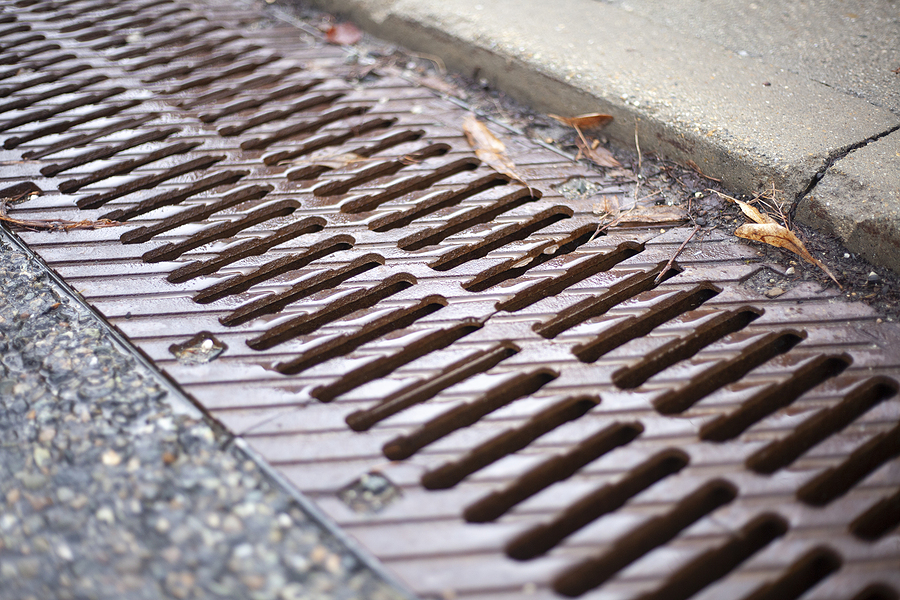Water pooling in your commercial parking lot after a rainstorm isn’t just an inconvenience—it’s a costly problem waiting to happen. Poor pavement drainage can transform your property from a welcoming business environment into a liability nightmare, complete with safety hazards, structural damage, and potential legal issues.
Commercial property owners face unique challenges when it comes to pavement maintenance. Unlike residential driveways, commercial lots endure heavy traffic, varying weather conditions, and the constant pressure of business operations. When water doesn’t drain properly from these surfaces, the consequences extend far beyond puddles and inconvenience.
Effective pavement drainage protects your investment while ensuring the safety of customers and employees. Understanding how to identify drainage problems, implement proper solutions, and maintain your commercial pavement can save thousands in repair costs while preserving your property’s value and reputation.

Understanding Common Pavement Drainage Problems
Standing water represents the most visible sign of drainage failure, but the underlying causes often run deeper than surface-level issues. Commercial pavements face several drainage challenges that can compromise both safety and structural integrity.
Surface Water Accumulation
When water pools on your pavement after rainfall, several factors may be at play. Inadequate slope prevents natural water runoff, forcing moisture to collect in low-lying areas. Over time, these areas become weak points where further damage develops.
Compacted soil beneath the pavement can also contribute to drainage problems. Heavy vehicles and equipment compress the ground, reducing its ability to absorb water naturally. This forces more water to remain on the surface, increasing the burden on your drainage infrastructure.
Structural Damage from Poor Drainage
Water penetration through cracks and joints creates a cascade of problems for commercial pavement. During freeze-thaw cycles, trapped moisture expands, widening existing cracks and creating new damage. This process accelerates pavement deterioration and can lead to costly reconstruction projects.
Potholes frequently develop in areas with chronic drainage issues. Water weakens the pavement foundation, making it susceptible to traffic damage. What begins as a small crack can quickly evolve into a major hazard requiring immediate attention.
Safety and Liability Concerns
Standing water creates slip-and-fall hazards that expose property owners to significant liability risks. Customers and employees navigating wet surfaces face increased accident risks, particularly during inclement weather or low-light conditions.
Beyond immediate safety concerns, poor drainage affects your property’s professional appearance. Visitors form impressions based on the condition of your parking lot, and chronic water problems can negatively impact your business reputation.
Request a Commercial Pavement Assessment Today! ☔
Effective Pavement Drainage Solutions
Addressing commercial lot drainage requires a systematic approach that considers both immediate fixes and long-term prevention strategies. The right pavement drainage solutions depend on your specific site conditions, traffic patterns, and local regulations.
Surface Drainage Systems
Installing proper surface drainage begins with ensuring adequate slope across your pavement. Commercial lots should maintain a minimum grade of 2% to facilitate water runoff toward designated collection points. Areas with insufficient slope may require resurfacing or reconstruction to achieve proper drainage.
Catch basins and storm drains provide essential infrastructure for managing water runoff from large commercial surfaces. These systems collect surface water and direct it toward municipal storm systems or on-site retention areas. Proper sizing and placement of these drainage components ensures effective water management during heavy rainfall events.
Permeable Pavement Options
Permeable pavement materials offer innovative solutions for managing water runoff while maintaining the durability required for commercial applications. These surfaces allow water to pass through the pavement into underlying drainage layers, reducing surface runoff and helping property owners comply with stormwater management regulations.
Porous asphalt and pervious concrete provide options that balance drainage effectiveness with structural performance. While initial installation costs may exceed traditional pavement options, the long-term benefits include reduced stormwater management requirements and improved environmental compliance.
Subsurface Drainage Systems
French drains and underground drainage pipes address water accumulation below the pavement surface. These systems collect groundwater and direct it away from the pavement foundation, preventing the soil saturation that leads to structural damage.
Geotextile fabrics and proper aggregate selection enhance subsurface drainage effectiveness. These materials filter water while preventing soil migration that can clog drainage systems over time. Professional installation ensures these components work together to provide lasting drainage solutions.
Compliance Considerations
Commercial pavement drainage must comply with multiple regulatory requirements. EPA stormwater management regulations govern how businesses handle water runoff, particularly regarding pollution prevention and water quality protection.
Local municipal codes often specify drainage requirements for commercial properties, including retention basin sizing and discharge rates. ADA guidelines also influence drainage design, requiring accessible routes that minimize water accumulation near building entrances and designated parking spaces.
Property owners should consult with drainage professionals to ensure their systems meet all applicable regulations while providing effective water management for their specific site conditions.
Maintenance and Prevention Tips
Proactive parking lot maintenance prevents minor drainage issues from becoming major problems. Regular inspection and maintenance activities help identify potential issues before they compromise your pavement’s integrity or create safety hazards.
Regular Inspection Protocols
Schedule monthly pavement inspections to identify developing problems early. Look for signs of standing water, new cracks, or areas where the pavement surface appears to be settling. Pay particular attention to areas around drainage structures and high-traffic zones where problems often develop first.
Document inspection findings with photos and notes to track changes over time. This information helps prioritize maintenance activities and provides valuable data for planning future drainage improvements.
Drainage System Maintenance
Clear drains and catch basins of debris regularly, particularly during fall months when leaves and organic matter can obstruct water flow. Blocked drainage structures force water to find alternative paths, often leading to surface accumulation and accelerated pavement damage.
Professional drain cleaning services can address more complex blockages and ensure drainage systems function at full capacity. Schedule these services annually or more frequently if your property experiences heavy debris accumulation.
Preventive Pavement Care
Seal cracks promptly to prevent water penetration that compromises the pavement foundation. Small cracks are relatively inexpensive to repair, but delaying treatment allows water infiltration that leads to more extensive damage.
Monitor pavement grading and slope, particularly after heavy construction activity or utility work. These activities can alter drainage patterns and create new problem areas that require attention.
RECAP
Effective pavement drainage represents a critical investment in your commercial property’s future. The costs of implementing proper drainage solutions pale in comparison to the expenses associated with premature pavement replacement, liability issues, and business disruption from poorly maintained surfaces.
Basic surface repairs typically range from $500 to $2,000, while comprehensive drainage system installation may require investments of $5,000 to $20,000 or more. However, these proactive measures can extend pavement life significantly and reduce annual maintenance costs to approximately $200-$500 when properly managed.
Developing a comprehensive parking lot maintenance plan ensures consistent care that preserves your drainage systems and pavement investment. This plan should include regular inspections, scheduled maintenance activities, and budgeting for both routine care and emergency repairs.
Professional pavement assessments provide expert evaluation of your current drainage effectiveness and recommendations for improvements. These assessments identify potential problems before they become costly repairs and help optimize your maintenance budget for maximum effectiveness.
Don’t wait for standing water and safety hazards to force action on your commercial pavement drainage. Schedule a professional pavement assessment with ACI Asphalt and Concrete to evaluate your current systems and develop a customized maintenance plan that protects your investment while ensuring customer and employee safety.
Related Post: A Comprehensive Guide to Commercial Pavement Drainage Solutions

